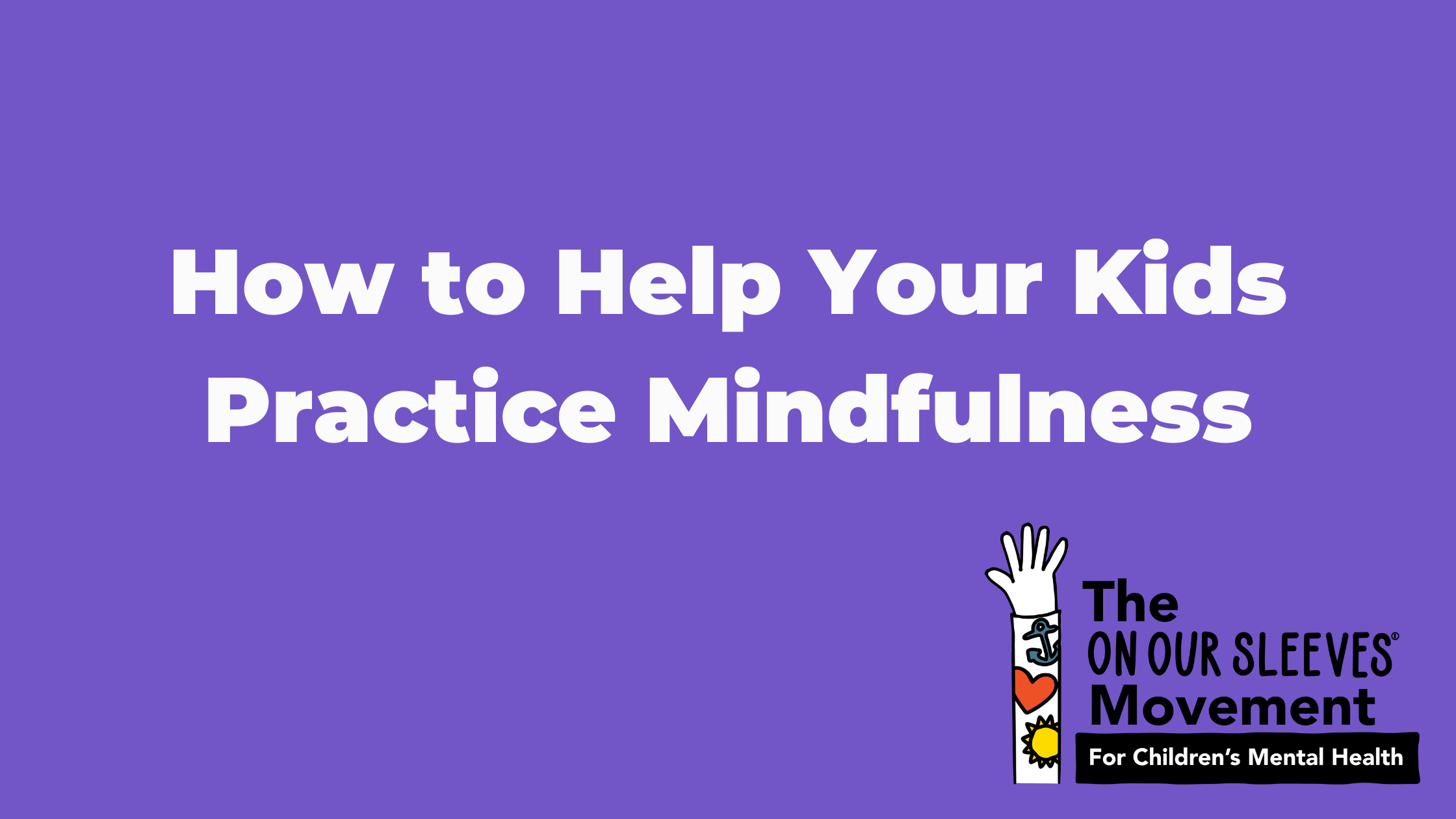How to Help Your Kids Practice Mindfulness
Did you know that mindfulness can help us cope with these big emotions, staying more in control, and enjoying the present moment? Mindfulness means being aware of the present moment without any judgment - like our surroundings, our thoughts and our feelings. ~ Brought to you by On Our Sleeves, the movement for children’s mental health

Sometimes we’re so absorbed in our thoughts about the past or future that we miss out on the present moment and the activity we are currently doing. At times, this can bring on some strong emotions, making us feel overwhelmed or out of control.
Did you know that mindfulness can help us cope with these big emotions, staying more in control, and enjoying the present moment? Mindfulness means being aware of the present moment without any judgment - like our surroundings, our thoughts and our feelings.
How Kids Can Benefit From Mindfulness
Practicing mindfulness may help kids:
- Focus more in school
- Control big emotions
- Worry less about the future
- Feel calmer
- Improve their mood and self-confidence
- Be more compassionate towards others
- Feel more optimistic and enjoy the present moment
Ways That Your Child Can Adopt Mindfulness Techniques
To practice mindfulness, start with simply observing and describing. Pay attention to thoughts, feelings and actions as they happen, accepting them at face value instead of judging them as right or wrong. Try to observe each thought as it happens and let it slip away so that you can observe the next thought.
Focusing your attention on the present moment helps you become fully immersed in whatever you’re doing: Tasting a warm, gooey cookie. Watching snowflakes fall on the sidewalk. Feeling the loving embrace of a group hug. Listening intentionally to a friend as they tell you about their day.
You can practice mindfulness with just about any task. Really, it’s all about just being in the present moment and not “time traveling” with your thoughts. For example, when baking cookies, you can narrate out loud to model mindfulness for your children. “I’m rolling the cookie dough in my hands, and it feels cool and squishy.” “I can smell the cookies baking in the oven.”
Learning to simply observe and describe can be a challenging task for even us adults, so it’s important to find ways to teach this skill to kids early on. Coach your child to pause and describe the moment they’re in. Start by describing what you see in the room around you, then have your child do the same. Then, maybe start describing facial expressions or body language. Feelings charades can be an excellent (and fun) way to practice observing and describing, AND build emotional intelligence! Take turns acting out certain emotions, and have the other person describe exactly what they see and try to guess the correct emotion. If you hear judgment or the mind starting to wander, call a timeout, and redirect back to observing and describing. For example, “I see you smiling and dancing. You look excited. Is that correct?”
It’s also important to teach kids how to observe and describe what they’re feeling and thinking in the moment. Sometimes thoughts and emotions can be big, and we don’t always know how to describe them. Practice using feelings words and giving names to different emotions both you and your child experience. Reinforce that it’s ok to feel whatever they are feeling in the moment. Sometimes feelings come with judgment or negative thoughts, and that’s the part we want to challenge ourselves to let go.
Here are other ideas you can try together to practice your mindfulness skills:
- Focus on breathing. Sit with your eyes closed and notice what it feels like to breathe in and out. Feel the cool air enter your nostrils. Breathe out slowly through your mouth and notice how the air comes out warm. Feel your chest rise and fall as you breathe. Maybe even see what it feels like when you move your breath all the way down to your belly. Slowly breathe in, and slowly breathe out.
- Use your senses. Take a moment to pause and notice what’s around you, wherever you are. What do you see, hear, smell, feel, and taste? Check in with each one of your senses to ground yourself in the present.
- Take a walk. Movement can be a great way to practice mindfulness. Go back to your five senses and take in everything around you. Notice your knees bending, arms swinging and feet hitting the ground. Notice sights and sounds that you encounter, like colorful birds or the whoosh of passing cars. Remember, take out the judgment – simply observe and describe the experience.
- Eat mindfully. Tapping into the senses again, use all five when eating your food. Notice how it looks, smells, tastes. How hot or cold it feels. The texture on your tongue. Does it make a sound when you bite? Is it crunchy? Also, sit at the table without distractions (like television or cell phones). Pay attention to only what’s in front of you.
- Body scan. You can do this one anywhere! Start down at your feet, noticing them touching the floor. Pay attention to how the muscles feel, or anything else you might be feeling. Now, imagine a big ball of light down by your feet. Imagine the light traveling up to your legs. Pause here and just notice what they feel like. Keep doing this and let the ball of light travel to your belly, hands, arms, neck, face, and all the way to the top of your head. Each time you pause, just pay attention to the feeling, and maybe even feel your muscles relax a little with each moment.
You can turn any moment into a mindful moment. Like any other skill, the more we practice, the easier it becomes! Whichever way you choose to incorporate this into your family’s daily life, know that you are teaching your child a valuable skill that will help them with those big emotions we know they will experience at times as they grow. When in doubt, just pause, observe and describe.

